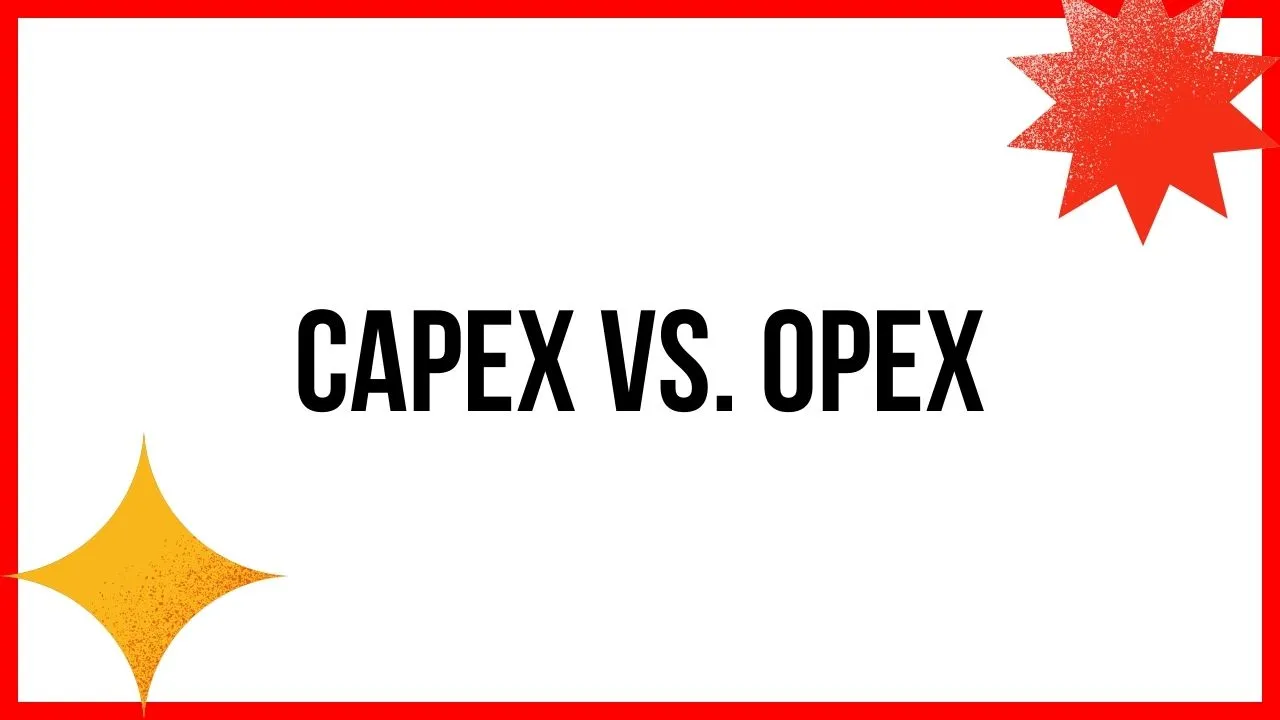Mastering Your First Car Purchase: A Comprehensive Guide to Securing the Best Loan
Buckle Up for Success: Mastering Your First Car Purchase with the Perfect Loan
Gliding down the open road in your own car – it’s a rite of passage, a symbol of freedom and independence. But before you hit the gas on that dream, navigating the twists and turns of your first car purchase can feel like driving blindfolded. Especially when it comes to the critical passenger in the backseat: the loan.
Fear not, young motorist! This comprehensive guide is your roadmap to Mastering Your First Car Purchase: a strategic handbook for securing the best loan possible and cruising toward automotive bliss.
Also Read – Banking System in India Explained
Forget the sputtering stalls and dead ends. We’ll equip you with the knowledge and tools to:
- Plan your pit stops: Budget savvy tips to determine your affordable price range and avoid overspending.
- Compare the mechanics: Demystifying lenders, interest rates, and loan terms to find the perfect fit for your financial engine.
- Fuel your negotiation skills: Confidence-boosting strategies to secure the most favorable loan terms and leave dealerships in the dust.
- Avoid roadside breakdowns: Essential credit-building tactics to pave the way for smoother financial journeys in the future.
This guide is your map to financial victory, filled with expert advice, real-world examples, and actionable steps. So, buckle up, turn the page, and get ready to master your first car purchase with the loan that takes you further, faster, and on your own terms.
Are you ready to hit the gas on your automotive dreams? Let’s go!
Also Read – How Short-term Loans Affect Your Credit Score: Exploring the Impact
Who is Eligible for First Time Buyer Loans?
New to car loans? A first-time buyer loan helps newbies (who haven’t financed a car before) borrow money to buy their first vehicle. These loans might be easier to get with less credit history, but usually have higher interest rates. Think of it as training wheels for your car loan journey!
You’ve got options when it comes to finding your first time buyer car loan! Here are some key places to explore:
Traditional Banks and Credit Unions: These are where most folks go first. They offer a variety of loan options, and credit union rates can be more competitive.
Online Lenders: Many online lenders specialize in first-time buyers and offer a convenient, quick application process. Be sure to compare rates and fees before committing.
Car Dealerships: Dealerships often have in-house financing options, but compare their rates with other lenders before signing anything.
Government-backed Programs: The Federal Housing Administration (FHA) offers Title I Loans that can help low-income borrowers get approved for a car loan.
Community Development Financial Institutions (CDFIs): These non-profit lenders target underserved communities and may offer affordable loan options for first-time buyers.
Family and Friends: Consider borrowing from family or friends, but clearly define terms and interest rates to avoid straining relationships.
No matter where you look, remember to compare rates, terms, and fees before choosing a loan. And make sure the lender is reputable and licensed.
Also Read- How to Earn $100 Daily: A Comprehensive Guide to Boost Your Income
How Do First Time Car Buyer Loans Work?
First Time Car Buyer Loans: How They Work, Wheels and All
First-time car buyer loans might sound like magic tricks, but they’re just regular car loans with a couple of twists for newbies. Here’s how they roll:
1. The Basics:
- You borrow money from a lender (bank, credit union, online, etc.) to buy a car.
- You repay the loan, with interest, over a set number of months (say, 36 or 60).
- The car acts as collateral – if you miss payments, the lender can repossess it.
2. Getting Approved (the Twist):
- Lenders love credit history: Having a good credit score makes approval easier and gets you lower interest rates. But as a first-timer, that history might be thin.
- Don’t worry, there are workarounds:
- Co-signer: Get a creditworthy friend or family member to back your loan.
- Alternative credit evidence: Show on-time rent payments, utility bills, or student loans.
- Larger down payment: Putting more money upfront reduces the loan amount and makes you less risky.
3. Interest Rates (another Twist):
- Expect them to be higher than for someone with established credit. This is the lender’s way of compensating for the extra risk.
- Shop around! Compare rates from different lenders to find the best deal.
4. Repayment:
- Make on-time payments every month to build your credit and avoid late fees.
- Consider a shorter loan term to pay it off faster, but make sure you can afford the higher monthly payments.
Bonus Tip: Use these loans as a stepping stone! Make those on-time payments and watch your credit score grow. Soon, you’ll be cruising into lower interest rates for your next car.
So, first-time buyer loans might not be perfect, but they can get you behind the wheel and on your way to financial freedom. Just drive responsibly, compare rates, and remember, it’s a marathon, not a sprint!
Also Read – Best Refer and Earn Apps in USA: Unlocking Exciting Rewards Through Referrals
Requirements for First Time Car Buyer Loans
Gearing Up for Your First Car Loan: The Nitty-Gritty Requirements
Buying your first car is a thrilling adventure, but before you hit the gas, there are some essential pit stops. One crucial stop is understanding the requirements for first-time car buyer loans. Buckle up, we’ll navigate them one checkpoint at a time:
1. Identity and Proof of Residence:
- Get your driver’s license, passport, or another valid ID ready.
- Prove where you live with utility bills, bank statements, or rental agreements.
2. Income and Employment:
- Show your lender you can handle the loan by providing pay stubs, W-2 forms, or tax returns.
- Steady employment helps, but some lenders consider student loans or income from other sources.
3. Credit History:
- While good credit helps secure lower interest rates, it’s not always a deal-breaker.
- Alternative credit evidence like rent payments or utility bills can be helpful.
- Consider a co-signer with good credit to boost your chances.
4. Down Payment:
- Putting some money down shows the lender you’re serious and reduces the loan amount.
- Aim for at least 10% for a used car and 20% for a new one, but any amount helps.
5. Minimum Age and Citizenship:
- Most lenders require borrowers to be at least 18 years old.
- Legal US residency or citizenship is usually a requirement.
Bonus Requirements:
- Some lenders may ask for additional documents like insurance quotes or vehicle information.
- Be prepared to answer questions about your budget and car-buying plans.
Remember:
- Requirements can vary by lender, so compare offers before committing.
- Don’t be afraid to negotiate terms and interest rates.
- Building good credit now paves the road for smoother financial journeys in the future.
With these requirements in your toolbox, you’re well on your way to securing the perfect first-time car buyer loan and cruising towards automotive freedom!
What is the Loan Process for First Time Car Buyers?
Navigating your first car loan can feel like a bumpy road, but fret not! Here’s a breakdown of the loan process for first-time buyers, from setting off to reaching your destination:
1. Pre-Drive Prep:
- Know your budget: Before hitting the showroom, decide on a comfortable monthly payment and total loan amount.
- Check your credit: Understanding your credit score helps you gauge which loans you qualify for and what interest rates to expect.
- Shop around: Compare rates and terms from different lenders, including banks, credit unions, online lenders, and even dealerships.
2. Applying for the Loan:
- Gather required documents like ID, proof of income, residence, and insurance quotes.
- Choose a loan term (number of months to repay) that fits your budget and goals.
- Consider a co-signer if your credit needs a boost.
3. Getting Approved:
- The lender will evaluate your application based on your income, credit history, and down payment.
- If approved, you’ll receive a loan agreement outlining the terms, interest rate, and repayment schedule.
4. Finalizing the Purchase:
- Negotiate the car price with the dealer, keeping your pre-approved loan amount in mind.
- Secure car insurance and register the vehicle.
- Sign the loan agreement and finalize the purchase.
5. Repayment Time:
- Make consistent monthly payments on time to avoid late fees and build your credit.
- Consider setting up automatic payments for peace of mind.
Tips for Smooth Sailing:
- Don’t overspend! Stick to your budget and avoid getting lured into higher loan amounts.
- Read all loan documents carefully before signing.
- Ask questions if anything is unclear.
- Make informed decisions and prioritize long-term financial health over immediate gratification.
Remember, your first car loan sets the stage for future financial journeys. By being prepared, informed, and responsible, you can navigate the process smoothly and cruise towards automotive freedom, with a loan that fuels your ride, not weighs you down.
What Interest Rates Can First Time Buyers Expect?
Unfortunately, there’s no one-size-fits-all answer to this question, as interest rates for first-time car buyers can vary significantly depending on a number of factors:
Your Credit Score: This is the biggest factor influencing your interest rate. A good credit score (generally above 670) will land you lower rates, while a lower score will mean higher rates.
Down Payment: Putting down a larger down payment reduces the loan amount needed and improves your loan-to-value ratio, making you less risky for lenders and potentially qualifying you for lower rates.
Loan Term: Shorter loan terms usually have lower interest rates because you’re paying the loan off faster. However, the monthly payments will be higher.
Lender Type: Different lenders have different risk tolerances and target markets, which can impact their interest rates. Online lenders might offer lower rates than traditional banks due to lower overhead costs.
Current Market Conditions: Overall economic conditions and interest rate trends can also affect the rates available to borrowers.
Current Car Loan Rates: As of October 2023, average interest rates for used car loans range from 4.05% to 7.20%, while new car loans average between 3.69% and 6.29%. These rates are for borrowers with good credit, so expect higher rates if your credit score is lower.
Here are some additional tips for getting the best interest rate:
- Shop around and compare rates from multiple lenders. Don’t just accept the first offer you get.
- Negotiate your rate. Don’t be afraid to haggle, especially if you have a good credit score.
- Consider a co-signer with good credit. This can help you qualify for a lower interest rate.
- Improve your credit score before applying for a loan. This can take some time, but it’s worth it in the long run.
Remember, even though interest rates for first-time buyers might be higher than for borrowers with established credit, there are still ways to get a good deal. By shopping around, negotiating, and building your credit, you can secure a loan that will help you achieve your car-buying dreams.
Tips for First Time Car Buyer Loans
Gearing Up for Freedom: Tips for First-Time Car Buyer Loans
Buying your first car is a rite of passage, but navigating the loan process can feel like a bumpy road. Fear not, young driver! Here are some essential tips to ensure your first car loan journey is smooth sailing:
Before You Hit the Showrooms:
- Know your budget: Crunch the numbers and determine a comfortable monthly payment and total loan amount that fits your finances.
- Check your credit: Understanding your credit score helps you gauge which loans you qualify for and what interest rates to expect.
- Shop around: Compare rates and terms from various lenders, including banks, credit unions, online lenders, and even dealerships. Get pre-approved for a loan to strengthen your bargaining power.
Applying for the Loan:
- Gather your documents: Get your ID, proof of income, residence, and insurance quotes ready. Choose a loan term that aligns with your budget and goals.
- Consider a co-signer: If your credit needs a boost, ask someone with good credit to co-sign your loan.
- Read the fine print: Scrutinize all loan agreements before signing. Understand the interest rate, repayment schedule, and any hidden fees.
Finalizing the Purchase:
- Negotiate the car price: Armed with your pre-approved loan amount, confidently negotiate the car price with the dealer. Stick to your budget and avoid getting pressured into overspending.
- Secure car insurance and register the vehicle. Don’t skip this crucial step! Choose an insurance plan that fits your needs and budget.
- Sign the loan agreement and finalize the purchase. Congratulations! You’re on your way to driving off into the sunset.
Beyond the Purchase:
- Make consistent payments: Prioritize on-time monthly payments to build your credit and avoid late fees. Consider setting up automatic payments for peace of mind.
- Mind the extras: Factor in additional costs like car maintenance, gas, and parking when budgeting for your car ownership.
- Learn and grow: Use this loan as a stepping stone to build good financial habits for future financial journeys.
Bonus Tips:
- Don’t overspend: Stick to your budget and resist the temptation to finance a car beyond your means.
- Ask questions: Don’t hesitate to clarify any doubts you have about the loan terms or the car buying process.
- Celebrate responsibly: Enjoy your new car, but remember to drive safely and prioritize financial responsibility.
With these tips in your arsenal, you’ll be cruising towards automotive freedom with a loan that fuels your journey, not weighs you down. Remember, your first car loan sets the stage for future financial decisions. Be informed, responsible, and make choices that pave the road to a smooth and successful financial future. Happy driving!
When Does Refinancing Make Sense for First Time Buyers?
While refinancing may be a common strategy for seasoned borrowers, it’s a less straightforward decision for first-time car buyers. Here’s when refinancing might make sense for you:
Reasons to Consider Refinancing:
- Significant Interest Rate Reduction: Aim for a reduction of at least 2% compared to your current rate. Lowering the interest rate could save you substantial money over the loan term.
- Improved Credit Score: If your credit score has significantly improved since your original loan, you might qualify for better rates.
- Shortening the Loan Term: Refinancing to a shorter term can increase monthly payments but reduce overall interest paid and build equity faster.
- Switching Loan Types: Moving from an adjustable-rate to a fixed-rate loan can provide stability and protect against future interest rate hikes.
- Eliminating Private Mortgage Insurance (PMI): If your home value has increased and you have enough equity, refinancing can help you get rid of PMI, which can save you money on your monthly payments.
Things to Consider Before Refinancing:
- Refinancing Costs: Factor in closing costs and application fees to ensure the savings outweigh the upfront expenses.
- Break-Even Point: Calculate how long it will take for the refinancing savings to recoup the closing costs. Only refinance if the break-even point is within your loan term.
- Impact on Credit Score: Refinancing can involve a hard credit inquiry, which can temporarily lower your score.
- Current Market Conditions: Consider prevailing interest rates in the market. Refinancing might not be worth it if rates are significantly higher than when you first got your loan.
For first-time car buyers, refinancing might be better after establishing a solid credit history and building equity in the car. If you’re unsure, consult with a financial advisor or loan officer to discuss your specific situation and determine if refinancing would be beneficial.
Remember, refinancing is a financial decision with both advantages and disadvantages. Weigh the options carefully and only proceed if it makes sense for your long-term financial goals.
I hope this clarifies when refinancing might be a good option for first-time car buyers!
FAQs
Who qualifies as a first time car buyer?
Defining a “first-time car buyer” can be a bit nuanced, as there isn’t a universal standard. However, here are some common interpretations:
Traditional Definition:
Broader Scope:
- New to the car buying process: Even if they’ve previously purchased a car through cash or family assistance, navigating the loan process for the first time can qualify them.
- Limited experience with auto loans: Those who received co-signed loans in the past due to limited credit might still consider themselves first-time buyers when taking out their own loan.
Special Programs:
- First-time buyer programs: Many lenders and dealerships offer special programs with specific eligibility requirements that may consider applicants without extensive credit history or prior car loans.
Ultimately, the definition of a “first-time car buyer” might be more subjective than it seems. While the traditional interpretation often focuses on the absence of a prior car loan, it’s important to consider individual circumstances and how comfortable someone feels navigating the car loan process.
Remember, seeking information and exploring available options, regardless of your specific label, is crucial for making informed decisions and securing the best loan possible for your first car purchase.
Where can I get a first time car buyer loan with bad credit?
Options for bad credit first-time buyers? Online lenders, dealerships with in-house loans, and credit unions focused on community lending are your best bet. Explore, compare rates, and consider a co-signer to boost your chances!
How can I get a first time car buyer loan with no credit?
No credit, no problem (maybe)? Explore online lenders specializing in bad credit, consider a co-signer with good credit, save for a larger down payment, build credit with alternative methods like rent payments, and compare rates aggressively.
What down payment is required for first time car buyer loans?
No one-size-fits-all, but aim for at least 10% for used cars & 20% for new. More saves cash upfront and lowers loan amount, meaning smoother sailing on your financial journey!
Do dealerships offer special first time buyer programs?
Dealership first-time programs? Heck yeah! Easier approvals, lower rates, even flexible down payments. But compare rates, negotiate hard, and avoid sneaky fees. Your keys to automotive freedom await!























































